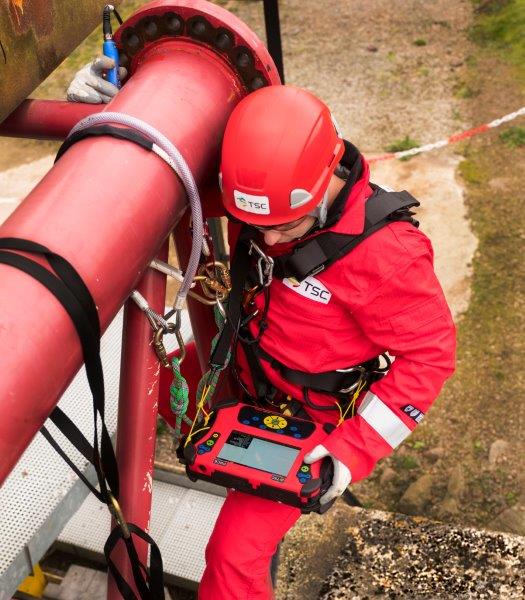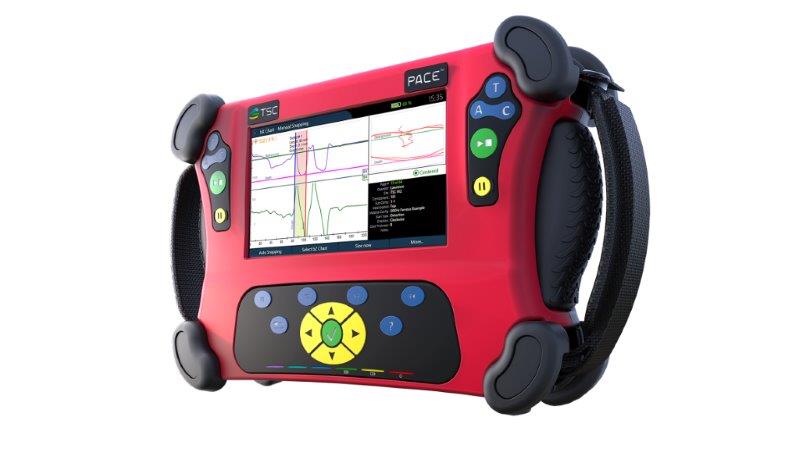ACFM: The solution to high-temperature inspection

Asset inspection has, up until now, been somewhat limited when it comes to locations where the temperatures are elevated. Even planned downtime, with everything in place for the fastest of inspections or maintenance, proves costly. The ability to conduct NDT testing in areas where temperatures might be as high at 500oC, and for extended periods, not only has the potential to dramatically reduce costs, but also removes the problem of cracks closing up when materials cool.
The answer to this challenge is that of Alternating Current Field Measurement (ACFM), an electromagnetic technique that uses special high-temperature resistant probes.
These probes combine the alternating current potential drop technique with Eddy Current Testing. While standard ACFM probes can be used at high temperatures for a short amount of time, the use of components such as heat-resistant insulated nickel wire is used to provide further capacity to withstand even higher temperatures and longer periods of use.
Such assets have multiple uses, such as:
- The permanent installation of such probes in locations beneath lagging that are prone to multiple defects
- Inspecting areas of hot pipework within petrochemical plants
- Ongoing inspection during welding without the need for any cool down time
ACFM Amigo Probes
A range of these probes has been created to allow inspection within a range of temperature options:
- The standard ACFM Amigo probe: Ceramic noses insulate the sensor coils and can be used in high temperatures where the internal heat within the probe doesn’t exceed 80o This makes them suitable for inspecting structures at high heat for short periods of time.
- Underwater ACFM probes: Those designed for sub-aqua use, where the electronic portion of the probe is external to the body of the unit, can withstand high temperatures up to 120o The only proviso is that the probe cable itself doesn’t come into contact with the hot surface.
- Elevated temperature probes: By surrounding the coils with a ceramic paste they can be further insulated from the heat. This allows a standard probe to be used in an environment of 200-300o In such cases it’ll be necessary to carry out scans for a few seconds at a time, and allow the probe to cool between each use.
- Purpose-built extreme high temperature probes: Specifically manufactured for continuous inspection of surfaces where the temperature is up to 500oC is achieved by the use of thicker, heat-resistant insulated nickel wire. However, it’s important to note that the use of this causes a decrease in the sensitivity to short or shallow cracks and defects. The smoother the surface the less this is an issue, and in such cases anomalies can generally be detected down to around 1mm deep when inspecting ferrous steel.
The probes themselves come in two basic options.
- With forced-air cooling
- Without forced-air cooling
The reason for the two types is down to access to restricted areas. The probe without forced-air cooling is smaller, specifically to combat the challenge of tight spaces. This does, however, mean that there is no room for air cooling. The barrier to the high temperatures is thanks to the housing in the probe nose that can withstand heat of up to 800oC for several minutes.
The larger, weld-type probe with forced-air cooling has a much higher capacity for elevated temperature and can be used continuously.
The advantages of being able to carry out NDT inspection of assets without the need for shut down are considerable. In addition to the cost-saving aspect and negating the issue of cracks closing in cooled structures, it presents a dynamic method by which pro-active inspection can be carried out on a regular basis.
Such monitoring is hugely advantageous, allowing strategic planning for necessary maintenance, highly reducing the chances of an expensive shutdown due to an incident, or for inspections that show no faults. It also provides the ability to eke the ultimate life-span from structures, thanks to ongoing monitoring throughout an assets lifecycle.
The key to functional and cost-effective maintenance is down to a carefully determined strategy that’s flexible enough to adapt to ongoing needs. This would include the use of the latest proven technology as it becomes available and an equipment provider with a forward-thinking, solutions-driven approach. That’s why Nexxis has become the go-to source for those in the know, thanks to our unique and dynamic model that’s as individual as your business.
To find out how this unique customer-focused company is fast-becoming the equipment provider of choice in the competitive global industries of oil and gas, mining, construction, utilities and more, contact us now.

